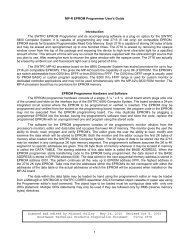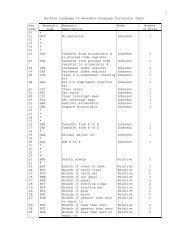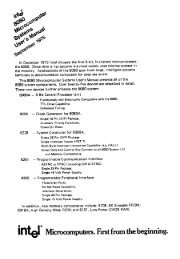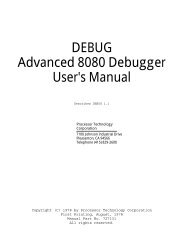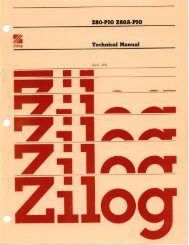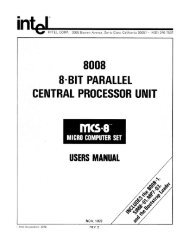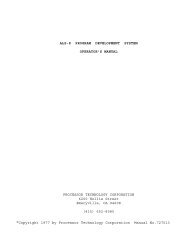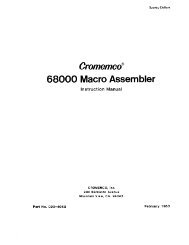The System Manual of SOL-20 - History of Computers
The System Manual of SOL-20 - History of Computers
The System Manual of SOL-20 - History of Computers
You also want an ePaper? Increase the reach of your titles
YUMPU automatically turns print PDFs into web optimized ePapers that Google loves.
PROCESSOR TECHNOLOGY CORPORATION<br />
Sal-PC SINGLE BOARD TERMINAL COMPUTER TM<br />
SECTION III<br />
3.6.4 Modification for 625 Line Video<br />
<strong>The</strong> European televisions standard defines a raster <strong>of</strong> 625<br />
lines at a field rate <strong>of</strong> 50 Hz. <strong>The</strong> horizontal rate <strong>of</strong> the U.S.<br />
standard, 15,750 Hz., is maintained. Only the number <strong>of</strong> scan lines<br />
on the screen is increased.<br />
<strong>The</strong> Video Display Generator section may be modified f or the<br />
50 Hz. standard by following the additional steps below. <strong>The</strong> effect<br />
<strong>of</strong> the modification is to increase the modulus <strong>of</strong> the counter U62 to<br />
eight during VDISP. This results in four extra character lines (52<br />
scan lines) between the bottom and top <strong>of</strong> the display area, for<br />
a total <strong>of</strong> 312 scan lines per field and 624 scan lines per frame.<br />
<strong>The</strong> field rate should be close enough to 50 Hz. to reduce<br />
any swim effects to less than 0.1 Hz. Some difficulty may be<br />
encountered in obtaining centering <strong>of</strong> the display within the frame.<br />
This is because the stand-<strong>of</strong>f time to VSYNC from the bottom <strong>of</strong> the<br />
display is unchanged from the 60 Hz. standard. If objectionable,<br />
increase the value <strong>of</strong> resistor Rl00 which is in series with the VPOS<br />
control.<br />
To convert for 50 Hz., perform these additional steps:<br />
( ) Locate U62 on the component side legend. Find pin 5<br />
<strong>of</strong> this IC on the component (front) side <strong>of</strong> the board.<br />
Cut the “V”-shaped trace connecting pin 5 to the nearby<br />
pad designated “AF”, using a sharp exacto blade or<br />
scribe, so that there is no continuity between these<br />
pads.<br />
( ) Bend a small piece <strong>of</strong> bare wire, such as a resistor<br />
clipping, into a loop to form a jumper between pad<br />
“AF”, and the adjacent pad “AG”. Insert the jumper,<br />
pull close to the board, solder, and trim the leads.<br />
If this modification is made, change the schematic, X-18, to<br />
show that pin 5 <strong>of</strong> U62 now connects to pin 4 (ground), instead<br />
<strong>of</strong> pin 6 as shown.<br />
III—40



